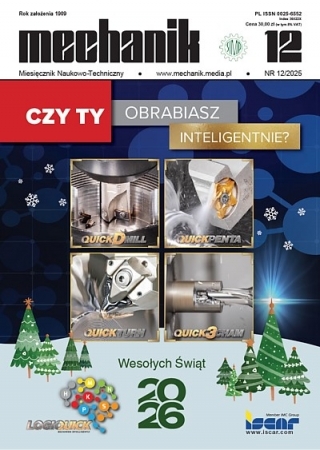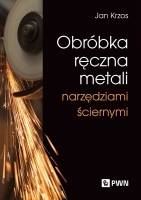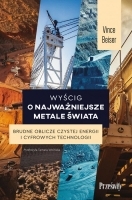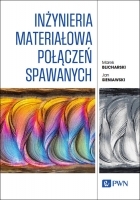Progress in modelling and simulation of the machining process – part II: Mesh-free modelling and simulation
Postęp w modelowaniu i symulacji procesu skrawania – część II: Bezsiatkowe modelowanie i symulacja *
Mechanik nr 05/06/2024 - Obróbka skrawaniem
ABSTRACT: In this paper some rules of mesh-free/meshless modelling and numerical simulations of fundamental physical phenomena associated with the machining process, including mechanisms of plastic deformation, chip formation and interfacial friction are overviewed. Some representative examples of the mesh-free modelling application to material removal processes at different scales, i.e.: machining processes, water jet-assisted processes, additive machining processes and simulation of micromachining processes using predominantly SPH (smoothed particle hydrodynamics) method are given.
KEYWORDS: mesh-free modelling, numerical simulations, machining process
STRESZCZENIE: W artykule omówiono zasady bezsiatkowego modelowania i symulacji numerycznej podstawowych zjawisk fizycznych towarzyszących procesom obróbki, w tym mechanizmów odkształcania materiału, tworzenia wióra i tarcia. Podano przykłady zastosowania bezsiatkowego modelowania procesów obróbki ubytkowej, m.in.: obróbki skrawaniem, wysokociśnieniową strugą wody (WJM i AWJM) oraz obróbki i symulacji mikroobróbki z użyciem metody SPH (hydrodynamiki wygładzonych cząstek).
SŁOWA KLUCZOWE: modelowanie bezsiatkowe, symulacja numeryczna, obróbka skrawaniem
BIBLIOGRAFIA / BIBLIOGRAPHY:
[1] Grzesik W. “Progress in modelling and simulation of the machining process – part I: Multiscale modeling” / „Postęp w modelowaniu i symulacji procesu skrawa-nia – część I: Modelowanie wieloskalowe”. Mechanik. 3 (2024): 30–37, https://doi.org/10.17814/mechanik.2024.3.4.
[2] Zhang N., Klippel H., Afrasiabi M., Röthlin M., Kuffa M., Bambach M., Wegener K. „Hybrid SPH – FEM solver for metal cutting simulations on the GPU including thermal contact modelling”. CIRP Journal of Manufacturing Science and Technology. 41 (2023): 311–327, https://doi.org/10.1016/j.j.cirpj.2022.12.012.
[3] Yanagimoto J., Banabic D., Banu M., Madej L. “Simulation of metal forming. Visualization of invisible phenomena in the digital era”. CIRP Annals – Manufacturing Technology. 71 (2022): 599–622, https://doi.org/10.1016/j.cirp.2022.05.007.
[4] Zhang Y., Jung Y-G, Zhang J. “Multiscale modelling of additively manufactured metals”. Elsevier (2020).
[5] Rojek J. „Modelowanie i symulacja komputerowa złożonych zagadnień mechaniki nieliniowej metodami elementów skończonych i dyskretnych”. Prace IPPT PAN. 4 (2007), https://rcin.org.pl/Content/67301/PDF/WA727_16636_4-2007_Rojek-Modelowanie.pdf.
[6] Grzesik W. „Podstawy skrawania materiałów konstrukcyjnych”. Warszawa: PWN (2018).
[7] Orkisz J. „Dziś i jutro metod komputerowych mechaniki”, https://kmech.pan.pl/images/stories/prezentacje/50lecieKM/metody%20komputerowe%20mechaniki.pdf (dostęp: luty 2024).
[8] Danielewicz A. „Metoda SPH+MES na przykładzie symulacji wzmocnienia podłoża gruntowego metodą wymiany dynamicznej”. Rozprawy i Monografie PG. Gdańsk: Politechnika Gdańska (2016).
[9] Martinez H.V. “Practical comparison between the finite-element and mesh-free calculation methods in the analysis of machining simulations”. Fraunhofer IPA, https://www.dynamore.de/de/download/papers/dynamore/de/download/papers/2014-ls-dyna-forum/documents/simulationsmethodik-ii/practical-comparison-between-the-finite-element-and-mesh-free-calculation-methods-in-the-analysis-of-machining-simulations (dostęp: luty 2024).
[10] Villumsen M.F., Fauerholdt T.B. “Simulation of metal cutting using Smooth Particles Hydrodynamics”. LS--Dyna Anwenderforum, Sektion Metallumformung III. Bamberg (2008).
[11] Dehghani M., Shafiei A. “Replacing friction model with interaction between particles in analyzing orthogonal and rotational cutting processes using SPH method”. Journal of Computational Applied Mechanics. 52, 2 (2021): 297–306, https://doi.org/10.22059/jcamech.2019.280356.390.
[12] Akarca S.S., Altenhof W.J., Alpas A.T. “A Smoothed-Particle Hydrodynamics (SPH) model for the machining of 1100 aluminium”. 10th International LS-Dyna® Users Conference, Section Metal Forming. 3 (2008): 12.1–12.8, https://www.dynalook.com/conferences/international-conf-2008/MetalForming3-1.pdf.
[13] Islam R.I., Bansal A., Peng Ch. “Numerical simulation of metal machining process with Eulerian and Total Lagrangian SPH”. Engineering Analysis with Boundary Elements. 117, 5 (2020): 269–283, https://doi.org/10.1016/j.enganabound.2020.05.007.
[14] Ojal N., Cherukuri H.P., Schmitz T.L., Jaycox A.W. “A comparison of smoothed particle hydrodynamics (SPH) and coupled SPH-FEM methods for modeling machining”. Proceedings of the ASME 2020 International Mechanical Engineering Congress and Exposition, IMECE2020-24646 (2020), https://doi.org/10.3390/jmmp6020033.
[15] Abena A., Ataya S., Hassanin H., El-Sayed M.A., Ahmadein M., Alsaleh N.A., Ahmed M.Z., Essa K. “Hybrid Finite Element-Smoothed Particle Hydrodynamics Modelling for Optimizing Cutting Parameters in CFRP Composites“. Polymers. 15, 2789 (2023), https://doi.org/10.3390/polym15132789.
[16] Nguyen T.T., Hojny M. “Application of Smoothed Particle Hydrodynamics Method in Metal Processing: An Overview”. Archives of Foundry Engineering. 2022, 3 (2022), https://doi.org.10.24425/afe.2022.140238.
[17] Prieto J.M.R., Larsson S., Afrasiabi M. “Thermomechanical Simulation of Orthogonal Metal Cutting with PFEM and SPH Using a Temperature-Dependent Friction Coefficient: A Comparative Study”. Materials. 16, 3702 (2023), https://doi.org/10.3390/ma16103702.
[18] Limido J., Espinosa C., Salaun M., Lacome J.L. “SPHmethod to high speed cutting modelling”. Int. J. Mechanical Sciences. 49 (2007): 898–908, https://doi.org/10.1016/j.ijmecsci.2006.11.005.
[19] Markopoulos A.P., Karkalos N.E.,· Papazoglou E.‑L.“Meshless methods for the simulation of machiningand micro‑machining: A review”. Archives of Computational Methods in Engineering. 27 (2020): 831–853,https://doi.org/10.1007/s11831-019-09333-z.
[20] Fraser K.A., St-Georges L., Kiss L.I., Chiricota Y. “Hybrid Thermo-Mechanical Contact Algorithm for 3DSPH-FEM Multi-Physics Simulations”. IV InternationalConference on Particle-Based Methods – Fundamentalsand Applications – Particles 2015. E. Oñate, M. Bischoff,D.R.J. Owen, P. Wriggers & T. Zohdi (Eds). Barcelona(2015).
[21] Klippel H., Sanchez E.G., Isabel M., Röthlin M., Afrasiabi M., Kuffa M., Wegener K. “Cutting force predictionof ti6al4v using a machine learning model of SPH orthogonal cutting process simulations”. Journal of Machine Engineering. 22, 1 (2022): 111–123, https://doi.org/10.36897/jme/147201.
[22] Grzesik W., Żak K., Tomkiewicz-Zawada A. Analizai modelowanie powierzchni wytwarzanych w obróbceubytkowej. Warszawa: PWN (2023).
[23] Sridhar P., Prieto J.M., de Payerebrune K.M. “Modelinggrinding processes – mesh or mesh-free methods, 2Dor 3D approach?”. J. Manuf. Mater. Proc. 6, 120 (2022),https://doi.org/10.3390/jmmp60500120.
[24] Klippel H., Zhang N., Kuffa M., Afrasiabi M., Bambach M.,Wegener K. “iMFREE: A versatile software tool formodelling machining process with particle methods”. Procedia CIRP. 117 (2023): 13–19, https://doi.org/10.1016/j.procir.2023.03.004.
[25] Dehmer A., Prinz S., Breurer P., Barth S., Bergs T. “Simulation of machining behaviour of two-phase brittlematerials during grinding by modelling single-grainscratching using a combination of FE and SPH methods”. Int. J. Advance Manufacturing Technology. 128(2023): 1709–1723, https://doi.org/10.1007/s00170-023-12006-8.
[26] Shahveri H., Zohoor M., Mousavi S.M. “Numerical simulation of abrasive water jet cutting process using theSPH and ALE methods” Int. J. Advanced Design andManufacturing Technology. 5/1 (2011): 43–50.
[27] Yu R., Dong X., Li Z. “A coupled SPH-DEM model for thesimulation of abrasive water-jet impacting solid surface”. ICCM Conferences. The 13th International Conference on Computational Methods (ICCM2022). Computational Practicle Mechanics. 10 (2023): 1093–1112,https://doi.org/10.1007/s40571-023-00555-4.
[28] Stenberg N., Delic A., Björk T. “Using the SPH methodto easier predict wear in machining”. Procedia CIRP,58 (2017): 317–322, https://doi.org/10.1016/j.procir.2017.03.234.
[29] Zhang N., Klippel H., Kneubühler F., Afrasiabi M.,Röthlin M., Kuffa M., Bambach M., Wegener K. “Studyon the effect of wear models in tool wear simulationusing hybrid SPH-FEM method”. Procedia CIRP. 117(2023), 414–419, https://doi.org/10.1016/j.procir.2023.03.070.
[30] Spreng F., Eberhard P. „Machining process simulationswith Smoothed Particle Hydrodynamics”. ProcediaCIRP. 31 (2015): 94–99, https://doi.org/10.1016/j.procir.2015.03.073.
DOI: https://doi.org/10.17814/mechanik.2024.5-6.9
* Artykuł recenzowany





















